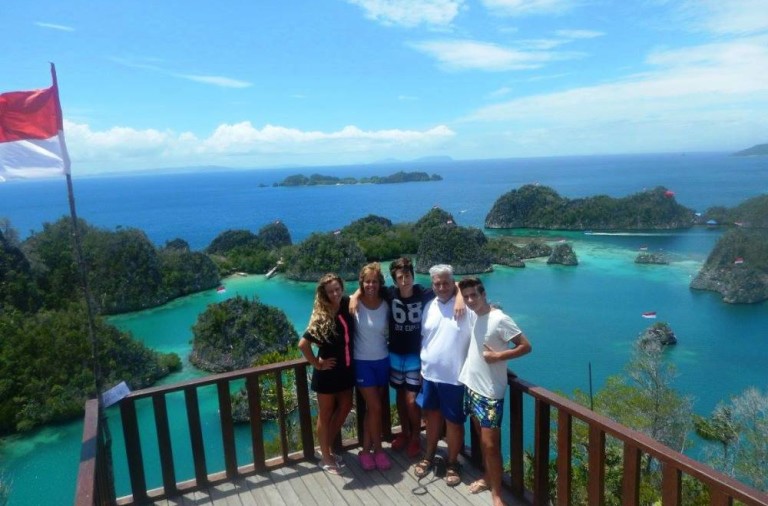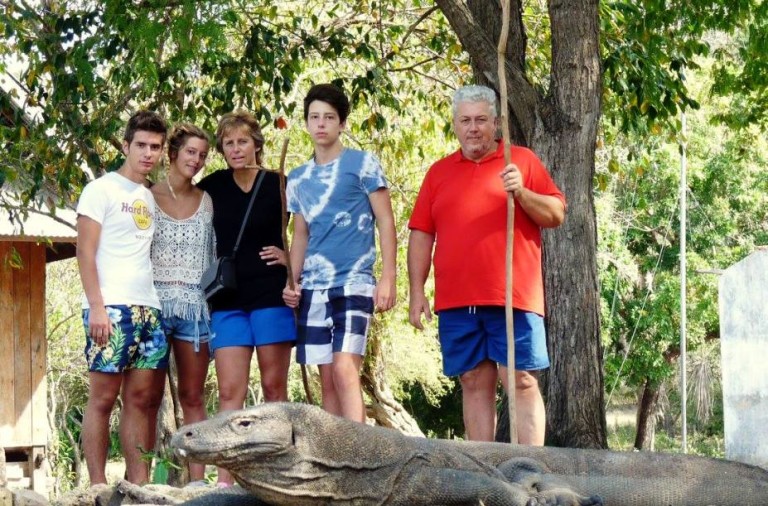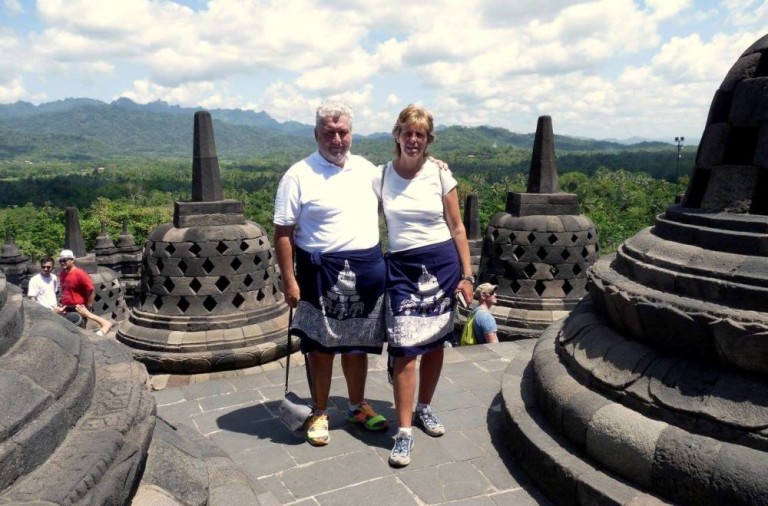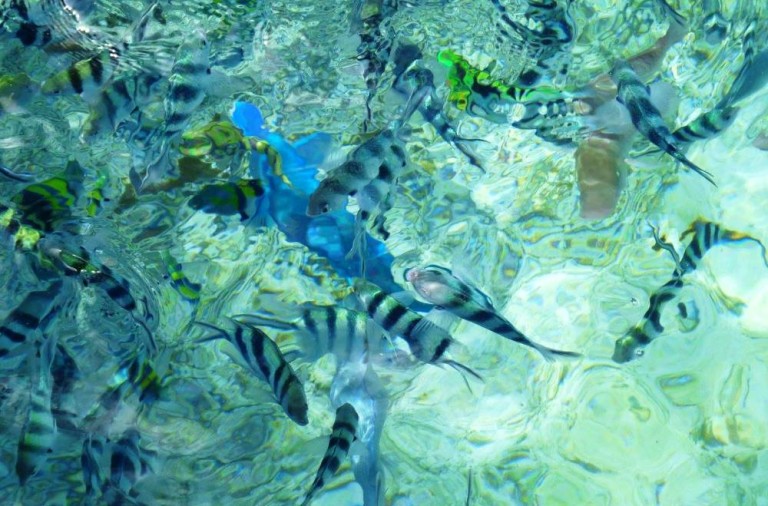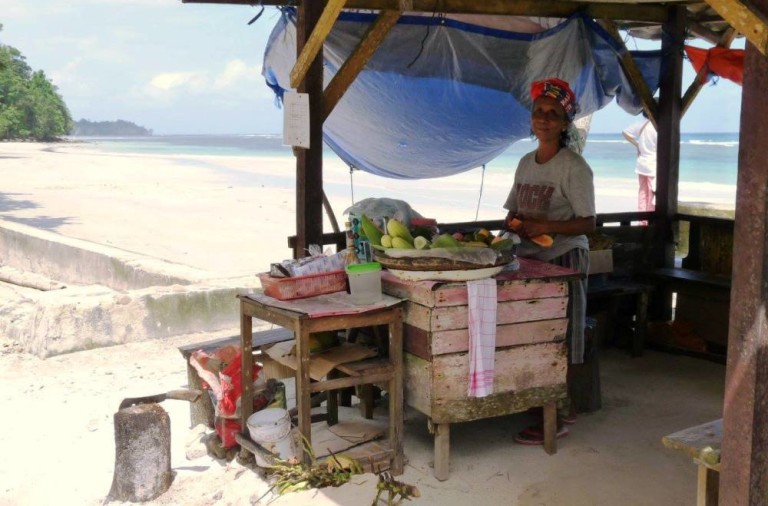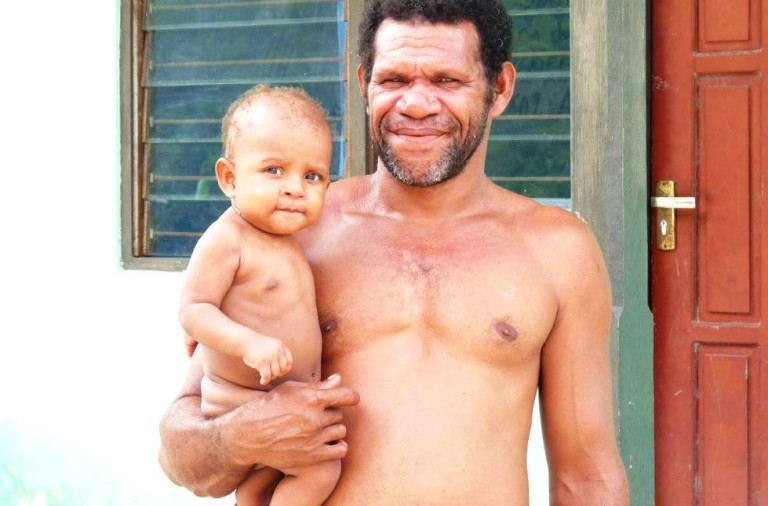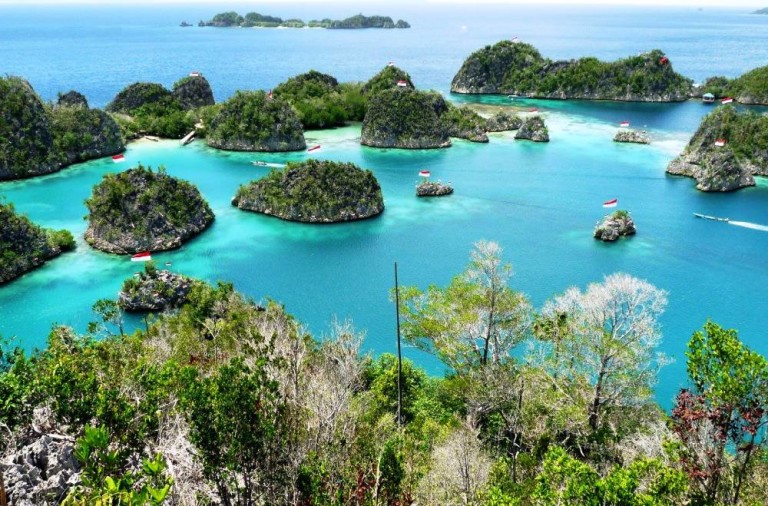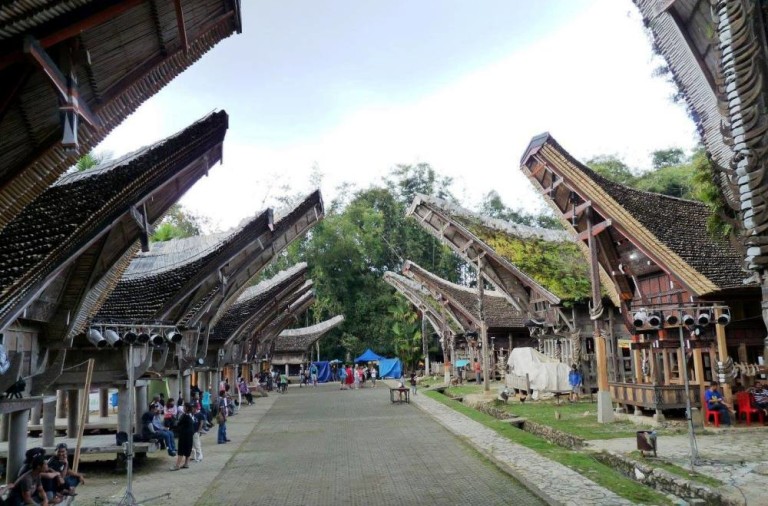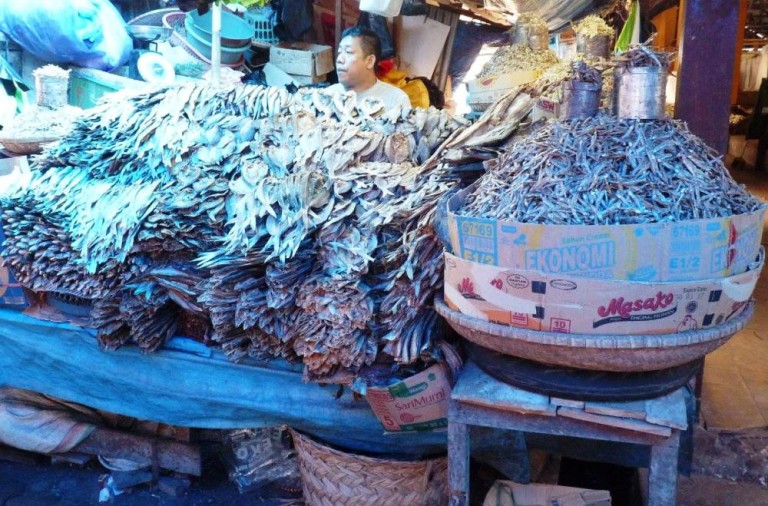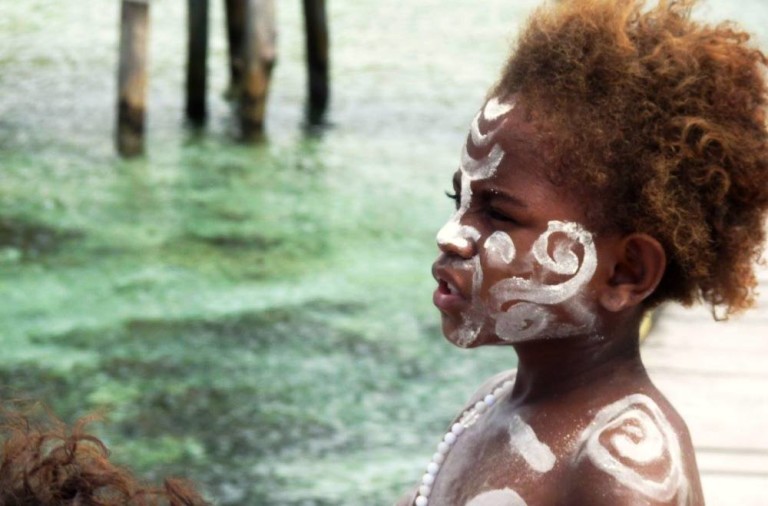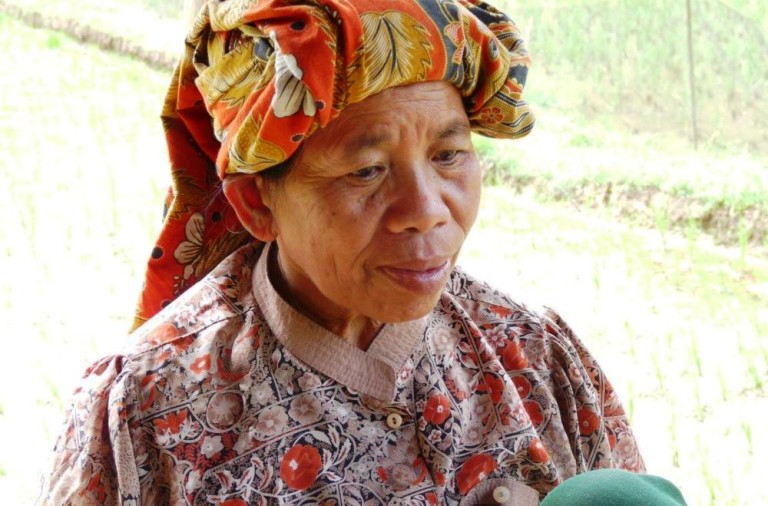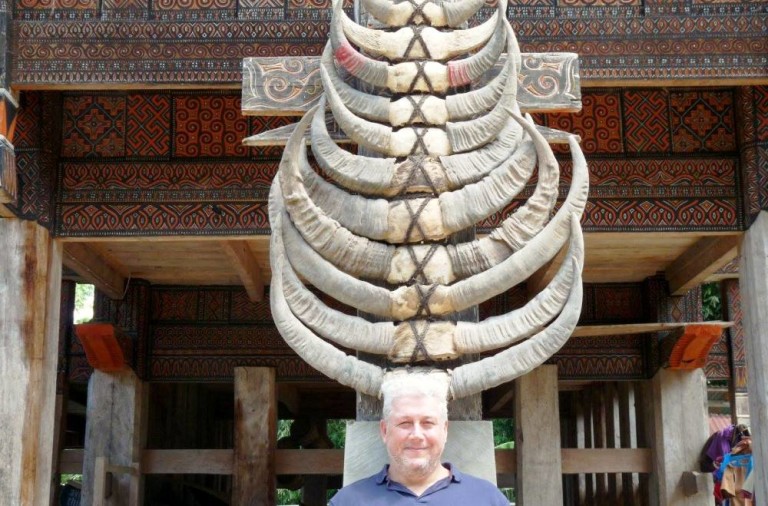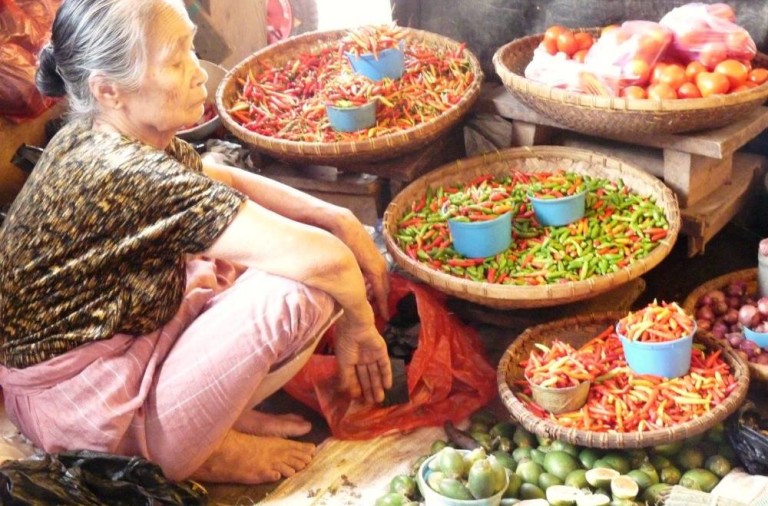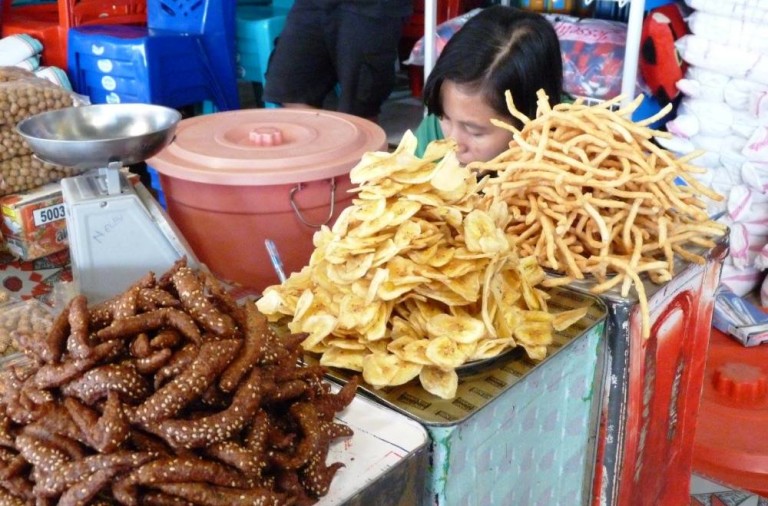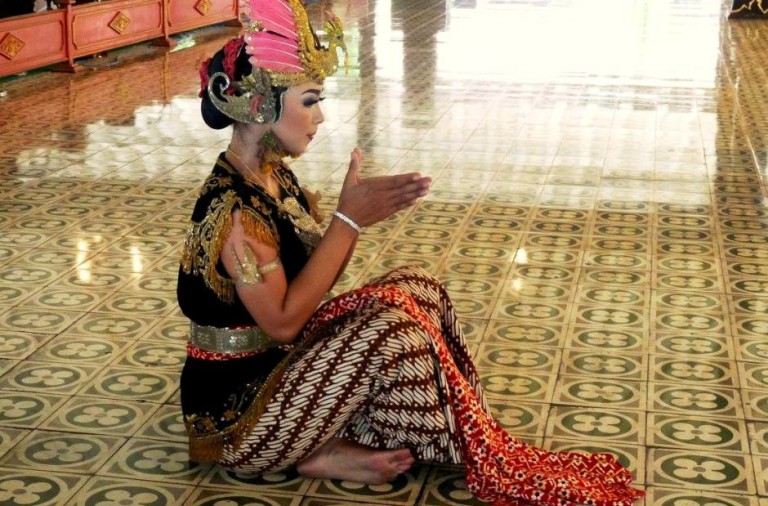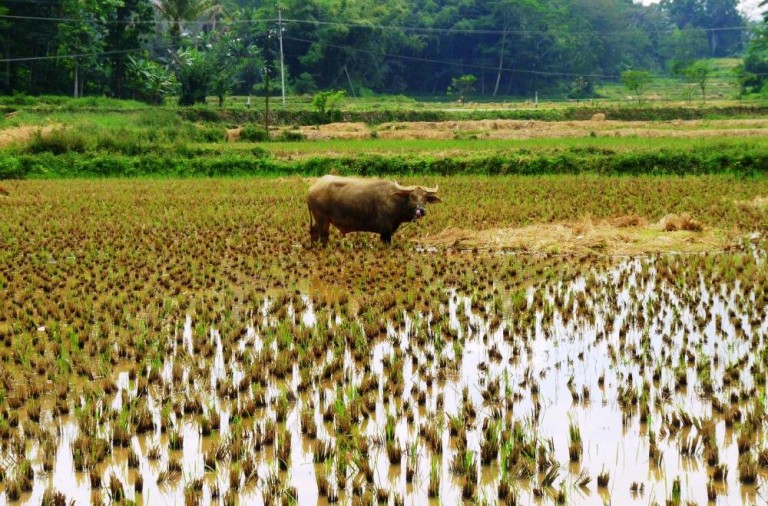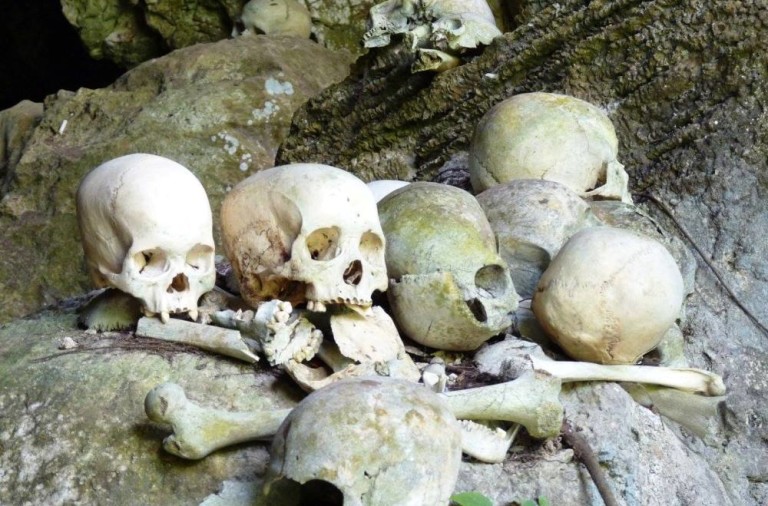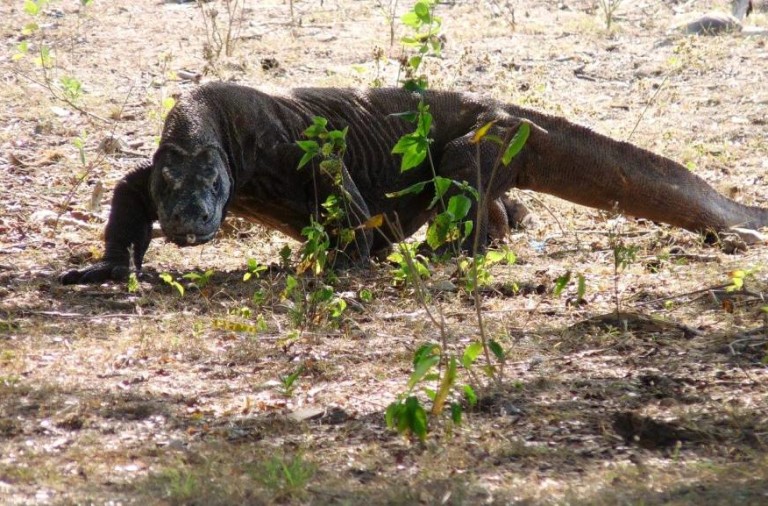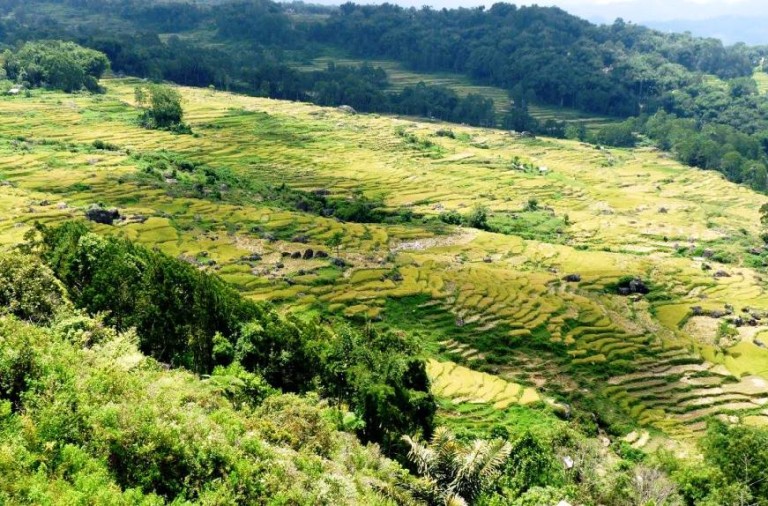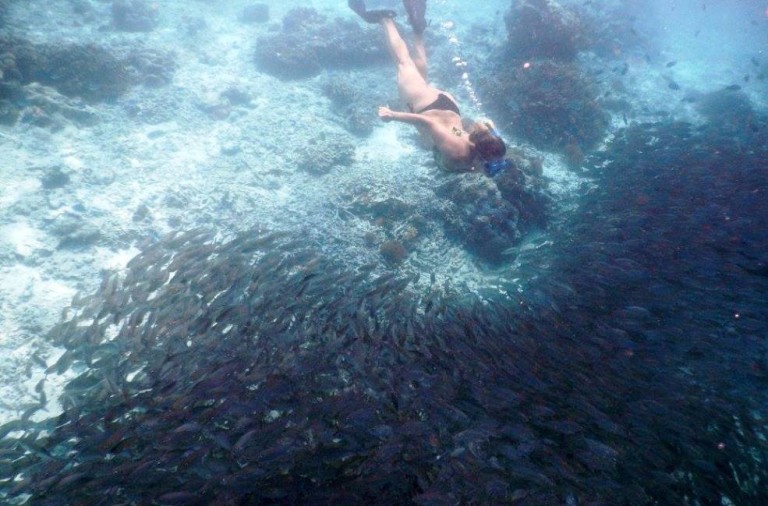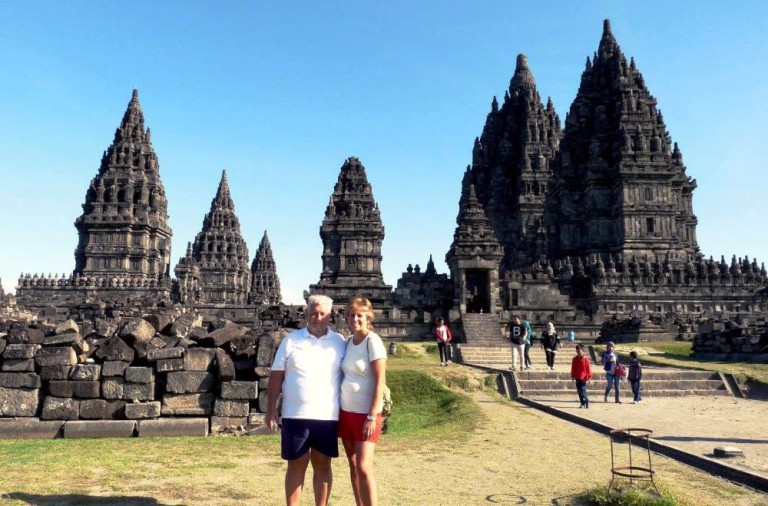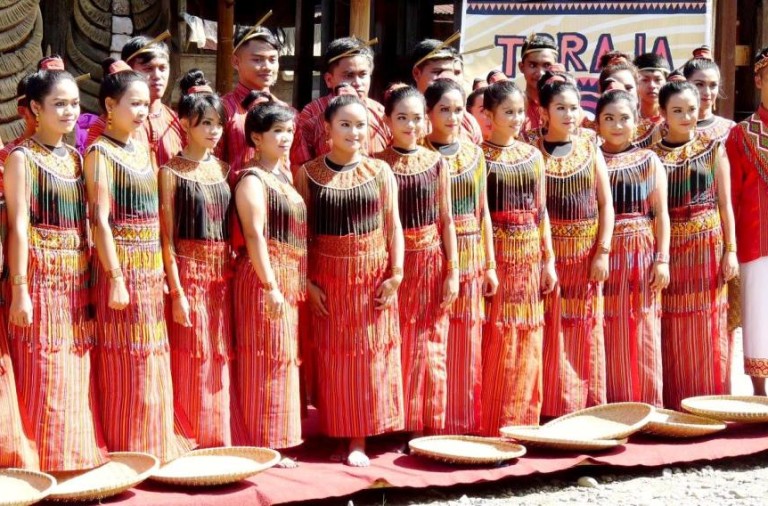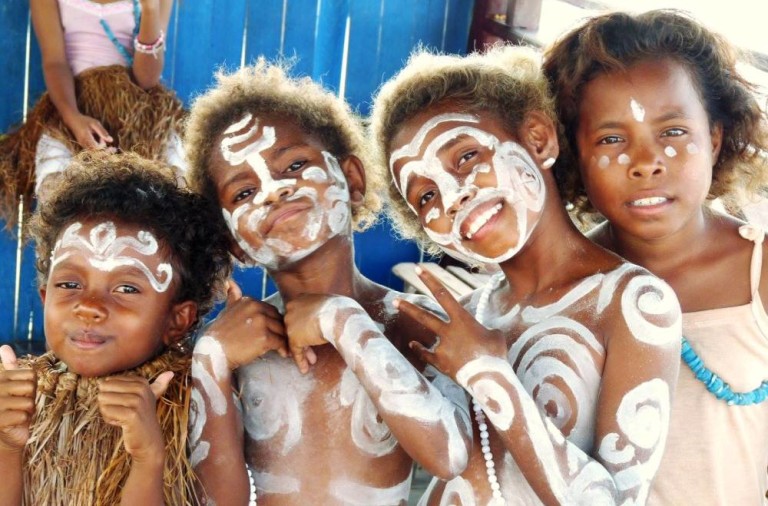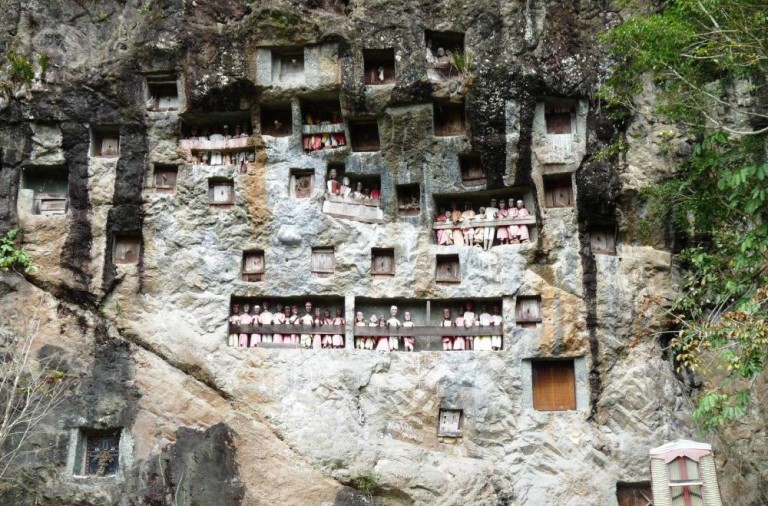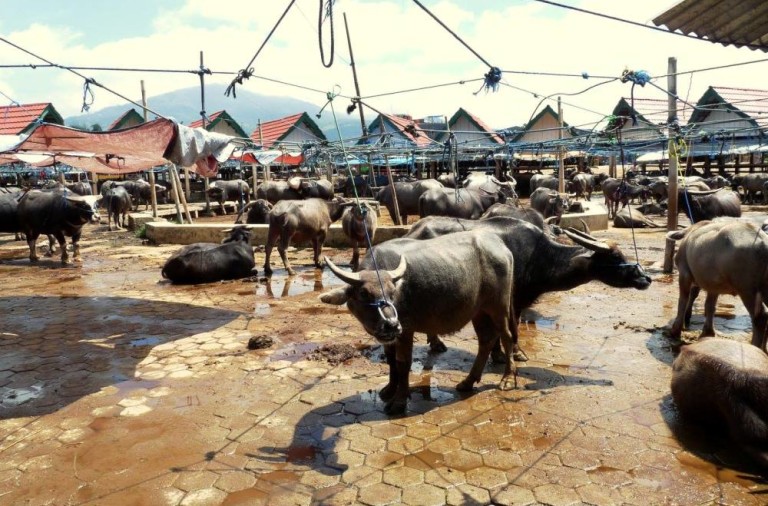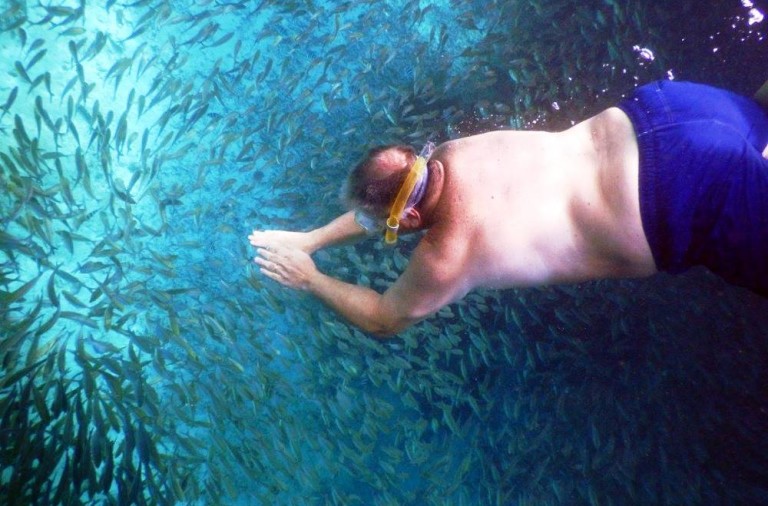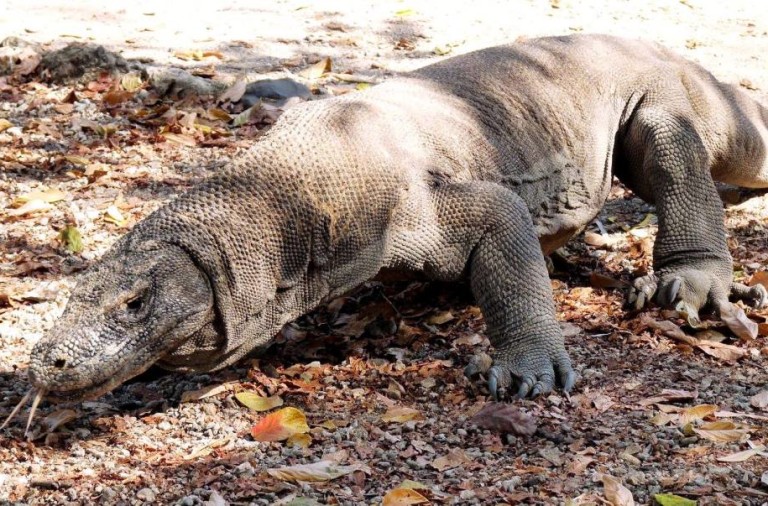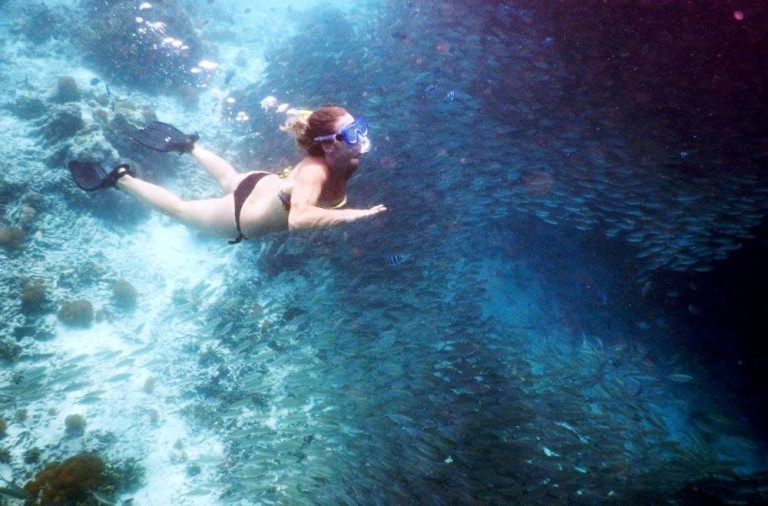Articolo disponibile anche in: Italian
Simone Mazzi, grocery store owner in Panzano in Chianti, is a real world traveler! He has just returned from his latest, incredible trip: the 135th country visited together with his inseparable family; Alessandro, Laura and her boyfriend Tobia, and his wife Roberta.
This time they traveled to Raja Ampat in Papua, New Guinea, an unknown archipelago lost in the middle of the Pacific Ocean. “The emotions and experiences were such that I don’t know where to start,” he tells us. “Everything began after viewing a TV documentary. It spoke about the remaining uncontaminated paradises on the planet. Raja Ampat is a recent geographic discovery. The camera focused on an archipelago of small green islands in a sea that changed from light blue to turquoise to blue to cobalt. Some marine biologists had studied the incredible concentration of biodiversity which populated the coral reef, a distance from the coast of Papua New Guinea”.
“We immediately got the idea”, he continues. “I searched for the location on the map and found out that it was one of the 7000 islands which make up Indonesia, therefore making it relatively ‘easy’ and inexpensive to reach. Thus began a year and a half search for a flight to Jakarta. We then bought a guide and chose the various internal flights and stops to arrive at Raja Ampat. We wrote tens of emails to find the lodgings most adapted to our needs; buses, hotels, parks. It took us a year to organize and enable us to depart with advance reservations, all 12 flights paid for and documented, and some reliable contacts who could help us visit the most remote areas. We did this spending less than half of what a travel agency would have charged for destinations that were much closer”.
“We don’t have unlimited resources”, comments Simone, “but were able to travel to these places spending the same amount we would have spent at Italian beaches. It is a question of organization and time”.
The first stop after they left was Istanbul which they visited even though there was a recent failed coup d’état and terrorist attacks: “We decided to leave the airport and to spend a few hours in the city. The city center is really beautiful, with very few tourists and Turkish flags everywhere. It was very quiet with a noticeable but not oppressive presence of police forces. We had dinner on the roof of a little restaurant with a view of a blue mosque on one side and St. Sophia on the other. Below us was the Bosphorus. We will not easily forget this suggestive location. We spoke with the people who are proud of their president, their country, and their success in dismantling the coup d’état”.
They then left for the long flight to Jakarta: “The Indonesian capital is nothing special; the classic south-east Asian city full of motorbikes, traffic, and both modern and crumbling neighborhoods. However, there is a lot of green and little smog. The morning after, we left immediately for the Archipelago of Maluku, precisely Kota Ambon. This was once the theater of violent battles between Christians and Muslims but is now very tranquil. Here is where our ‘out of the world’ trip begins. These islands, which have a glorious past of commerce in spices is now completely out of the tourist circuit. There aren’t structures, restaurants, hotels, or Westerners around. The attraction is…..us!”.
“All along the streets of the town where we were staying we were greeted by all”, continues Simone. “They invited us to see their houses, their children on bicycles. They photographed us. A group of students with their teacher came to the beach to take photos of the strange people who arrived from Italy. The beaches are wild and the sea is choppy in the South. The more sheltered North is a paradise, kilometers of talcum fine white sand trimmed with giant trees of nutmeg, cloves, and coconut palms. There are a few stands which sell fruit, flavored with a sweet sauce made of chopped peanuts, honey and other aromas. There are a few children
playing in the water, Some fisherman. The hills are covered with very green tropical vegetation, and there is the coral reef”.
In other words, it is a paradise on earth: ““We spent three days in our simple and spartan accommodations and really relaxed. Our next stop was Papua New Guinea. We arrived in Sorong and settled into the only Western style hotel in the city. This large Pacific island hosts an entire population which lives on hunting and farming, without electricity, and nude except for a penile covering. They are the last on earth. From Italy, I had contacted someone who had promised to bring us to Plainemo, the archipelago which started everything. He actually has a boat… not in great shape… but with two 350 hp motors. This is necessary in case one of the motors fail. We left in the middle of the night with the captain in charge of the motors. There is no tank and therefore he aspirated the fuel from the tanks by mouth… cook, guide, and very courageous”.
But it was worth the risk: “What we saw after three hours of navigation abundantly re-paid any discomfort. The archipelago of Raja Ampat is a maze of little green islands; you can see hundreds of fish in every color and form; sharks, rays, multicolored coral,. The Red Sea seems like a goldfish bowl in a theme park compared to this. We emerged several times in clouds of fish which opened up when we passed through. The local villages greeted us with hospitality and in one they cooked a gigantic delicious fish, (better then our boat’s chef), all consumed on a post card beach”.
“We returned to Sorong in the middle of the night”, smiles Simone. “We were completely soaked. (the boat’s glass door and a motor broke), but thrilled by such beauty. The next stop was the island of Sulawesi where we headed to visit the Turaja ethnicity, the people who live in the south east in a wide valley cultivated with terraced rice patties and every type of fruit, surrounded by mountains covered with thick jungles”.
Simone is very articulate, a pleasure to listen to. “This population has some bizarre customs. In particular, a man’s entire existence rotates around his funeral. The funerals are authentic nonstop parties which last for days and days. In a piazza surrounded by bamboo cabins built especially for the occasion, all relatives and friends as well as passing tourists are invited. There are banquets of tea, cookies, rice and barbecued animals you eat with your hands. The animals are sacrificed by having their throats cut in front of the dinner guests in a strange atmosphere, a mix between a Roman feast and a circle of Hell! And I am not speaking about hens and rabbits, but of fat black pigs and gigantic water buffaloes!”.
“The villages”, explains Simone, “are made up of characteristic cabins in the shape of boats with Buffalo horns lined up at the entrance. The more buffalos a family can buy and sacrifice, the more people there are at the funeral, the more the deceased will be serene and happy in the afterlife. The bodies are embalmed and kept in the home for years, until the family has enough to buy 24 buffalos to sacrifice. This allows them to put a doll outside of the cave which is dug into the rocky wall where the dead will be definitively buried. We attended a funeral after having offered a carton of cigarettes to the son of the deceased, and I assure you I have never seen anything like it in all my life”.
“We traveled around the valley for three days in an intense fairy tale like scenario. This people, aside from their bizarre beliefs and customs, are cordial, pleasant, and extremely hospitable. We also attended a festival with choruses and typical costumes… Beautiful. I will tell you another anecdote: When a small child dies. He is buried in a niche carved out of a big tree. According to the tribe, the child will continue to grow with the tree and when the bark closes up, he can return to the afterlife like an adult. We retrace our travel for another eight hours in the jungle and arrive at the town of Makassar. The trip continues, and with two brief flights we reach our next stop: Komodo Park. We also stopped in Bali, but I will not describe this. Although the island is beautiful, it is assailed by mass tourism”.
“Komodo Park is actually an uninhabited group of islands controlled by UNESCO, with fauna that is unusual and unique in the world. It is the reigning kingdom of the giant Komodo Dragon, a carnivore, which reaches 3 1/2 meters in length and feeds on other animals of the archipelago: birds, rodents, monkeys, dear, buffalo and horses. We visit the various islands in a boat and see around 20 of the animals, even some adult males. We are always accompanied by an armed park ranger to stop the dragons who hungrily look at us. We even bathe on one of the beautiful pink beaches of the park. Simply gorgeous”.
“The next stop is the isle of Java”, concludes Simon, “and its incredible temples. There is no feeling of solitude here: crazy traffic, thousands of motorbikes, lines of hotels, tourists from all over the world. On the other hand, these magnificent antique temples which date back 1200 years are some of the most visited archaeological sites of the planet. The Buddhist temple of Borobudur is an immense path of bas-reliefs and stupas which cover an entire hill in a green valley. It is perfectly restored and very interesting since it is the most important Buddhist temple in the world. The Hindu Temple of Prembanan, if possible, is even more spectacular with its enormous towers and pinnacles. You must then consider that the civilization that built these marvels crossed the Indian and Pacific Oceans with their ships many centuries before Columbus discovered America. Well….maybe it isn’t true that we invented everything” “I will leave out the last stops and the long trip home from the voyage that we will remember for all of our lives: faraway places, unknown, fascinating, and incredible, places that surprised and moved even seasoned travelers like us”.
Matteo Pucci
